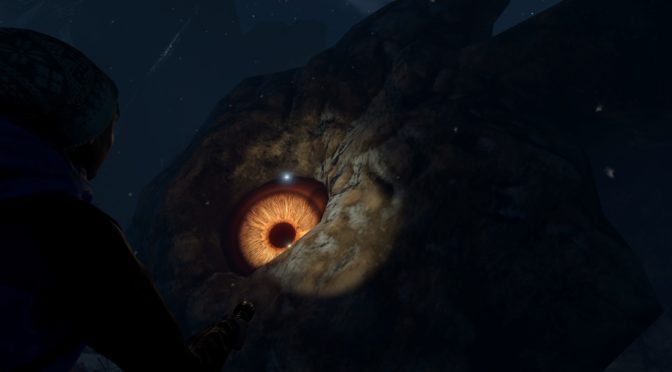Through The Woods is the sort of horror game that I’ve been asking for, for ages. Then why does the game come up short? Well, let’s dive into the conundrum that is Through The Woods.
Developer Antagonist and publisher 1C Company have injected new life into the now stale horror video game genre with Through the Woods. The game eschews the traditional tropes associated with so many walking simulators that bill themselves off as true horror games. The first thing you are going to notice is that Through the Woods is played from a third-person perspective instead of the first-person that is so prevalent.
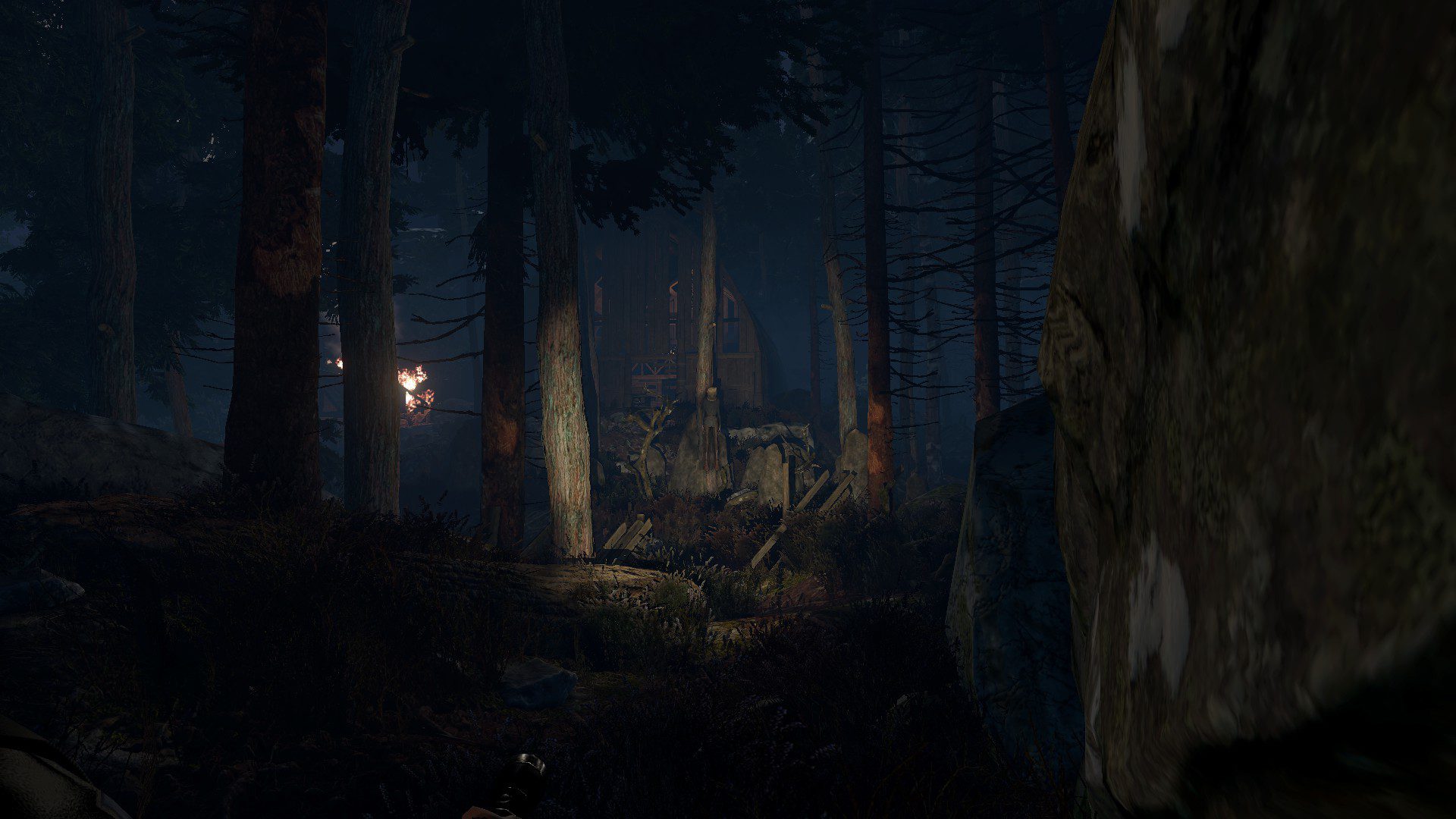
This is a huge deal because instead of trying to make the player feel as if they are in the game, it places the focus on an actual characters that you are plaything through. This new perspective allows us to build personal connections with characters instead of just experiencing what is happening around us. But while this is a lovely idea that pushes the game in a more cinematic direction, it comes up short for a couple of reasons.
The biggest of these failings comes from the voice acting employed by our lead actress. Through the Woods is a story about your lost child and your search to get him back. This is well enough to get us connected with the story, but our heroine rarely seems to care about what is really going on. If you are going to give us a lead to play through, then you better make damn sure that they can emote and act to what’s going on. She sounds so bored most of the time as if she is simply just reading the script. If you have your concerns about the current video game voice actor strike, just play through this game and imagine if all western actors sounded like this.
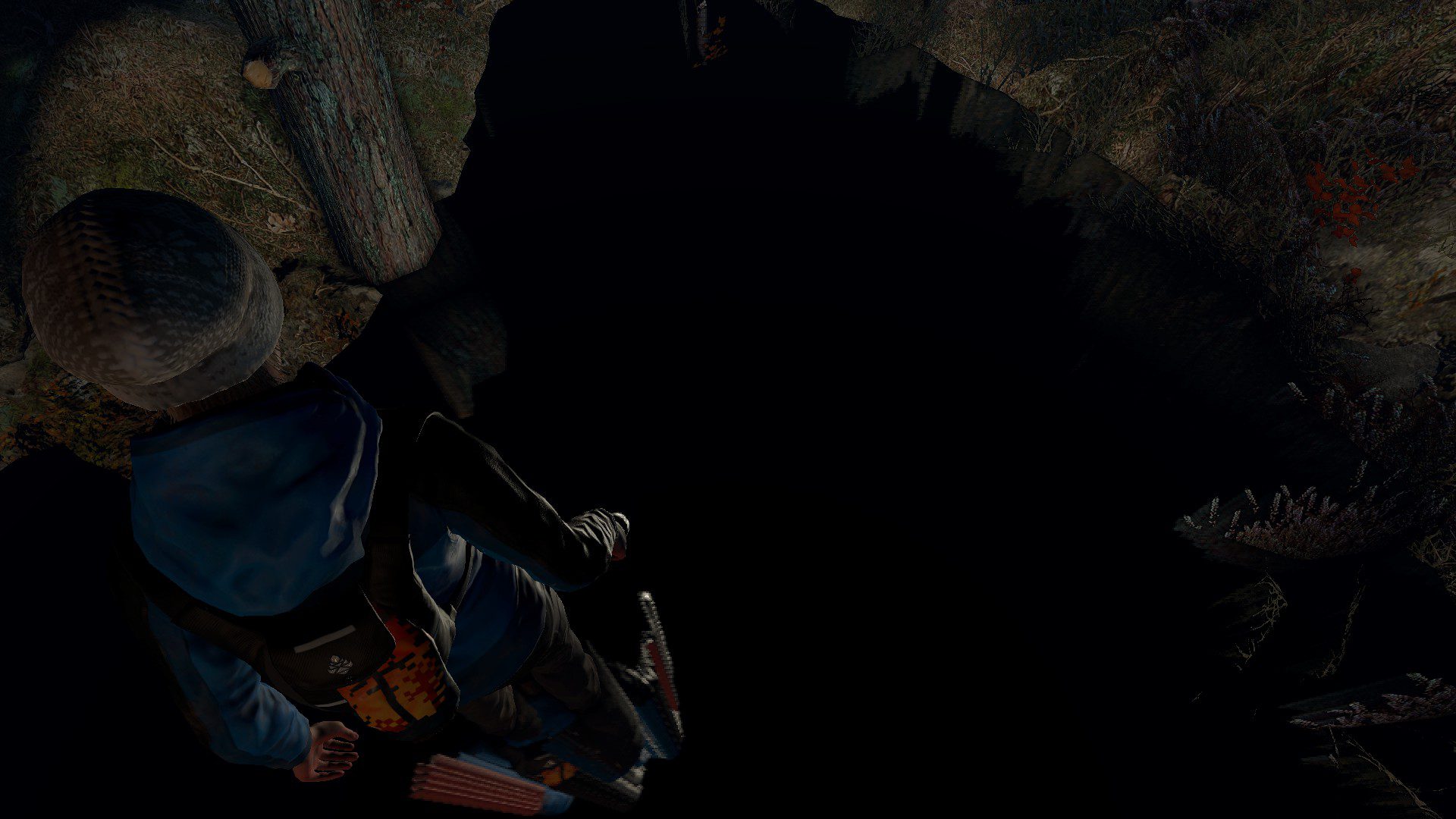
It’s tough to ignore the acting when Through the Woods works using reactive narration. Our lead will only spout off dialogue depending on what’s going on. It’s not a deep or revolutionary system, but after playing through the game twice I can say that it’s pretty expansive. It really makes you want to explore the world as much as possible, even when there are all sorts of baddies after you.
Where I think Through the Woods really shines is in the story. So many horror games are simply about some demon, possession, or crazy monster out to get you. They don’t often have much depth, instead opting to just be as scary looking as possible. These are fine for jump scares, but not for any real sense of fear building. Through the Woods mixes things up by playing off actual Norwegian folk legends.
This Norse mythology is something new, especially for western audiences and helps build real tension because most of these monsters have history that goes back generations. On top of that comes the one thing that will always make or break a horror game –the sound design. Through the Woods mostly nails this as the sound and music flow quite well and know how to build the tension. But while it’s good, the pacing isn’t quite so.
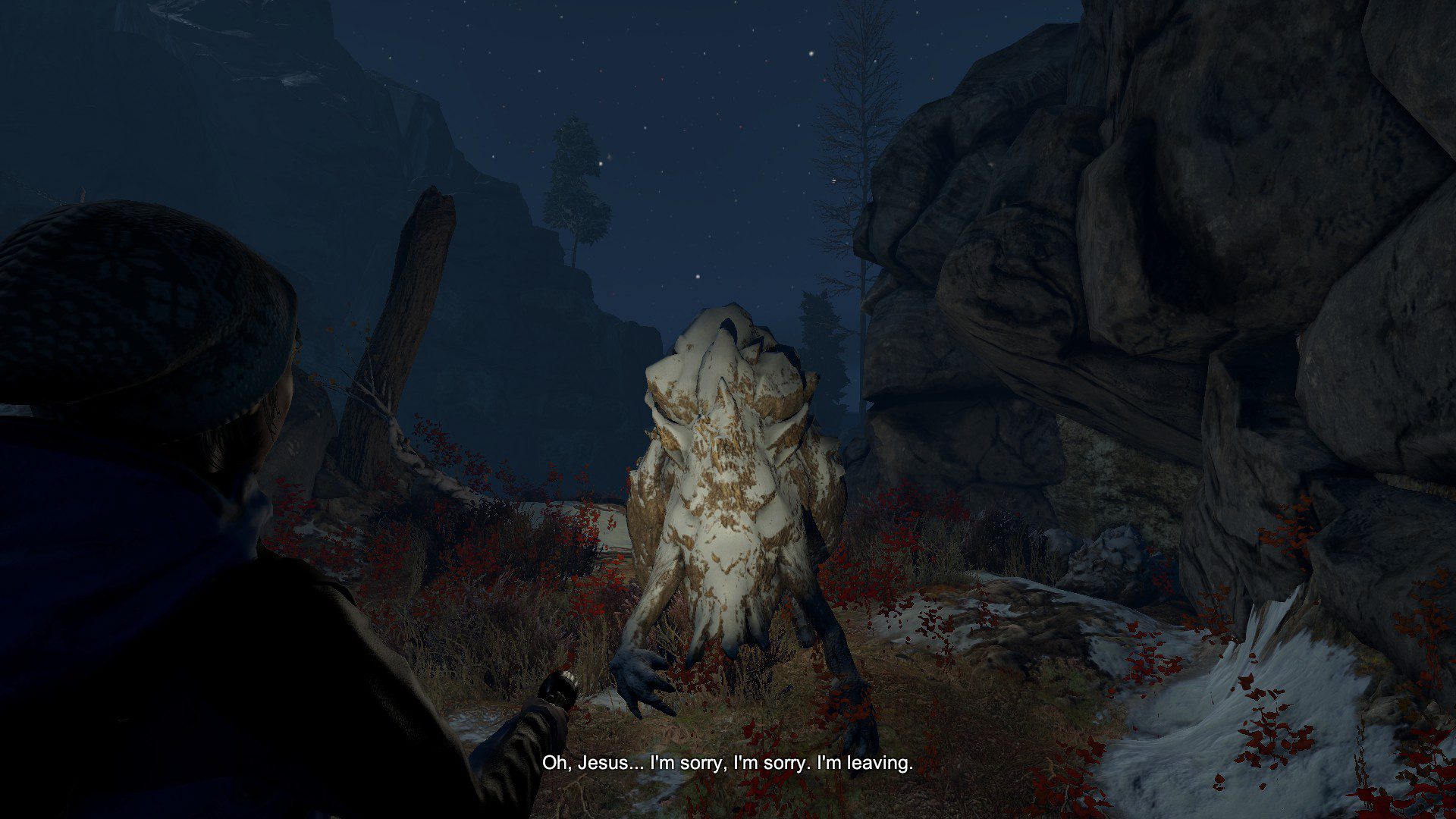
There are multiple paths that you can take, so chances are that you could skip things that are building and be left for a case of horror blue balls. Building tension is important, but if there is no payoff to that building you are left annoyed more than anything. The first time around I completely missed the first huge Troll that the game tosses your way. Oh, I heard him and the music swelled, but it just sort of stopped when I hit the next assigned marker.
What’s funny is that there are a number of instances and monsters that are spooky, but our heroine never really acknowledges them in any meaningful way. This is the issue with the third-person perspective as a player I’m reacting much differently than the character on the screen, and this breaks the immersion. That giant eyeball staring at me from the rock face is wicked spooky, as is those lights on the water that turn out to be the eyes of some floating island monster. But when the character barely responds, or completely ignores them it pisses me off.
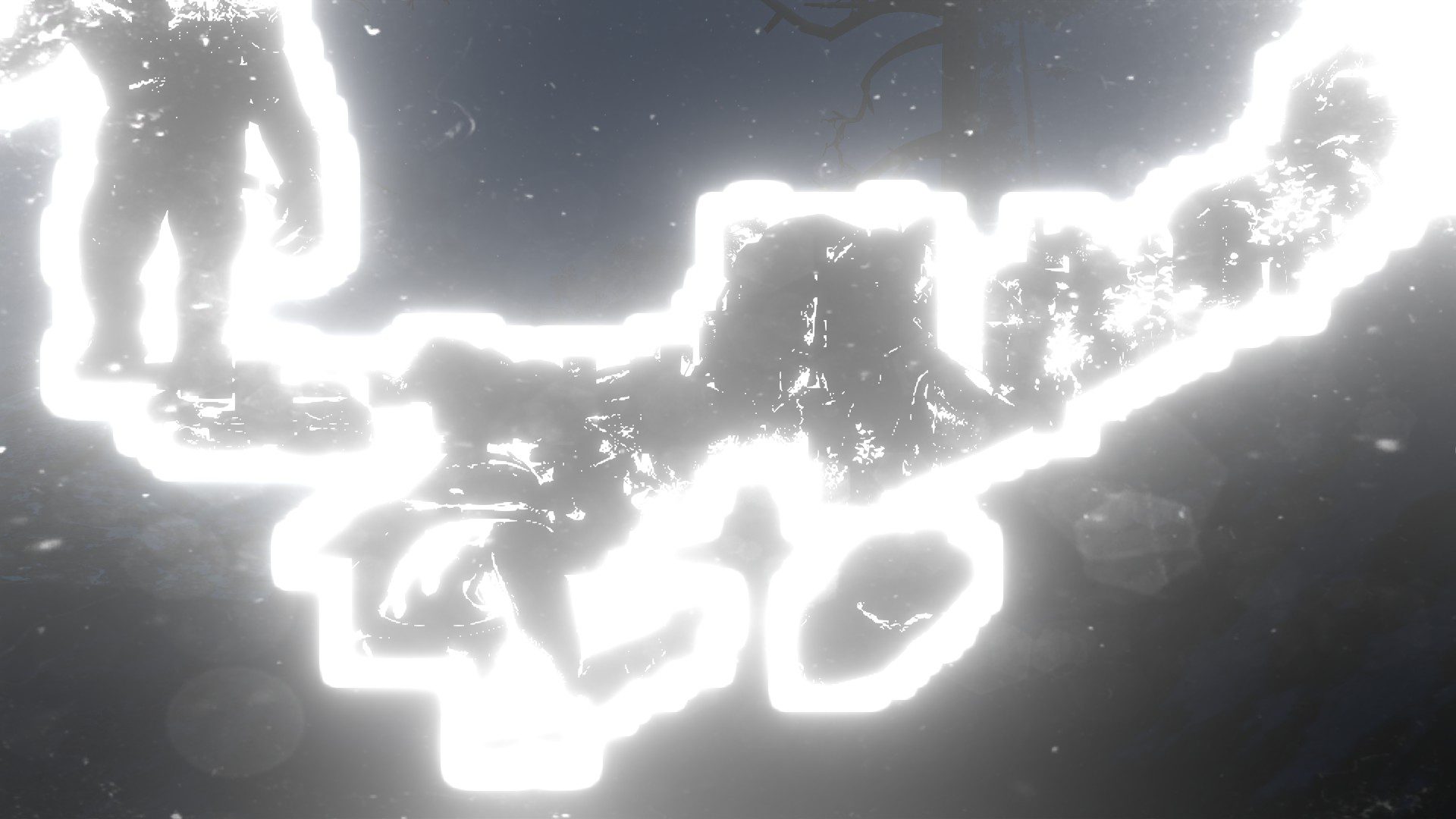
Graphically Through the Woods is also a mixed bag. There are times when the game looks great, but you can still see where the team cut corners. Things look much better at night as the darkness obscures many of the textures and pop-in. But even then the game runs pretty inconsistently. The cut-scenes stutter quite a bit and the game suffers from slowdown at seemingly random points. I’m running a gaming PC and just played the game on the settings it set for me when I launched it, but even then it had issues. Oh, and all of my recording software had a nightmare of a time trying to capture footage for our stream.
Through the Woods is also a pretty short game that still leaves you with a case of the blue balls. There was so much potential here, but the game just kept building and building and never hit a satisfying climax. Oh, and the scariest monster I encountered quickly turned into a joke after the game decides it’s going to throw it at you in a number of insta-kill situations.
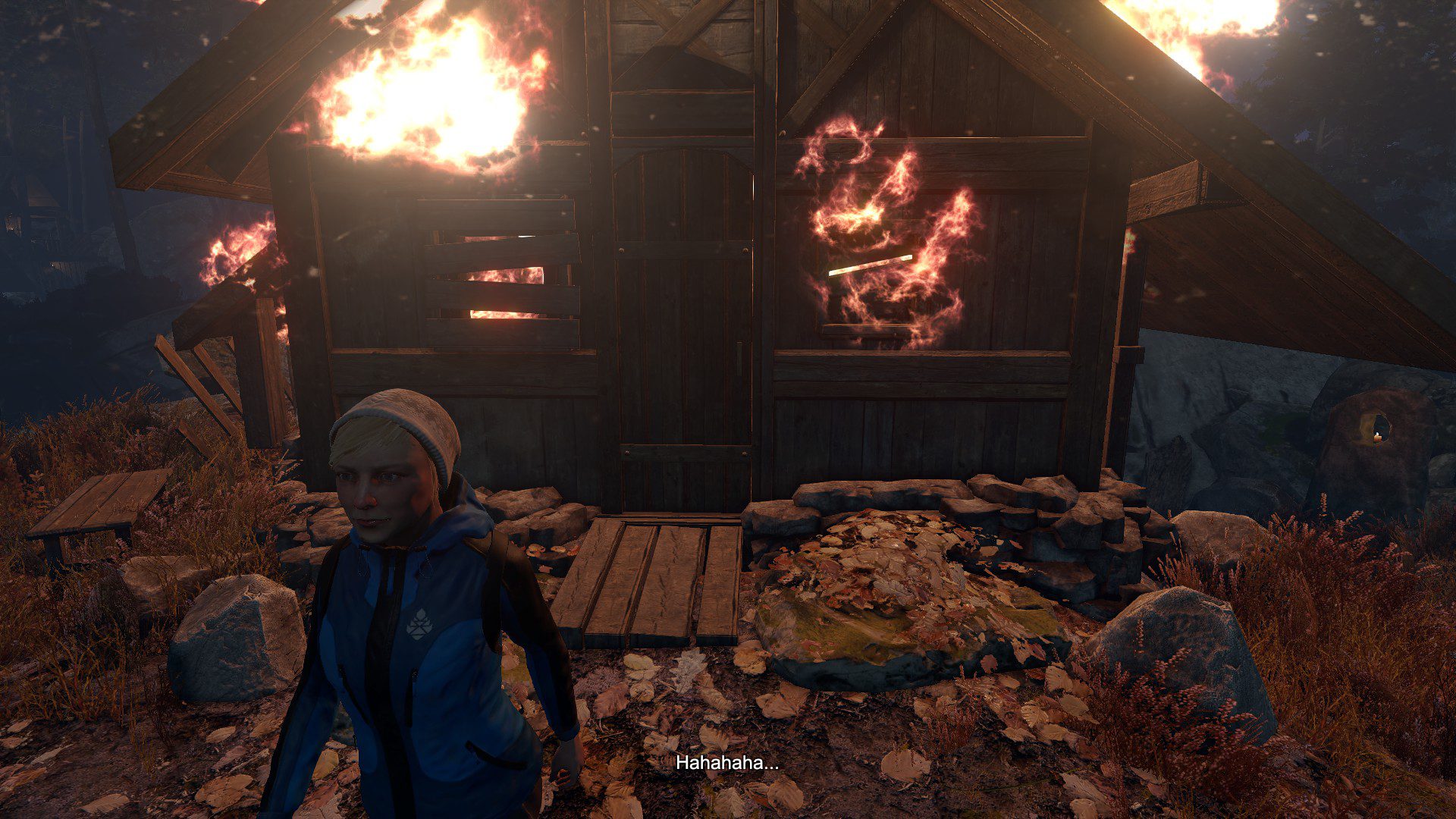
Through the Woods had a lot of potential, but it just never really does anything well enough to warrant a purchase. Inconsistent frame rates (even on high-end systems), pacing issues with the story, utterly terrible voice acting, not enough use of interesting monsters, and a serious case of blue balls makes for a less than stellar experience.
“Terrible voice acting and inconsistent pacing kill the amazing potential Through the Woods had as a horror game”
2/5
“Bad”

